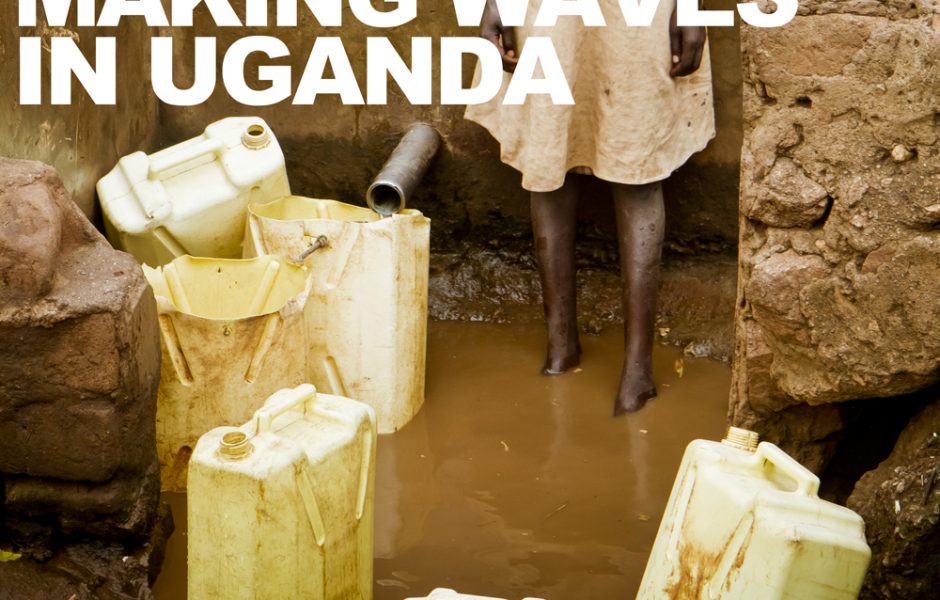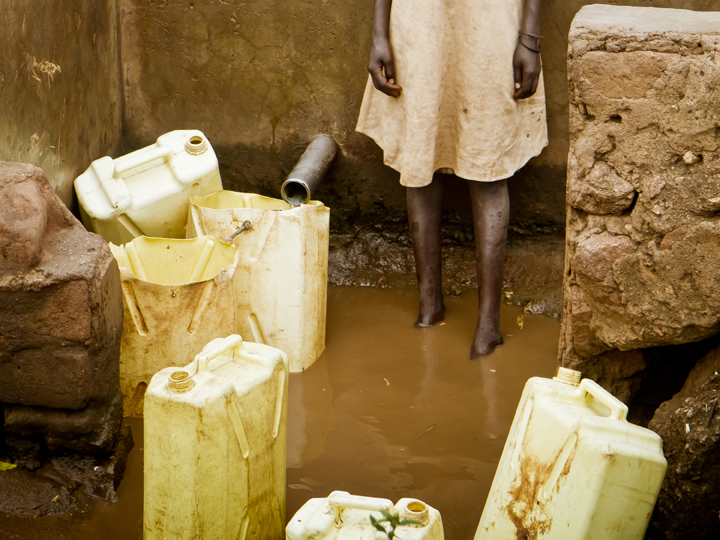‘Making Waves’ Photography Exhibit Highlights Uganda’s Water Crisis

The photography exhibit will be display at the Western Reserve Land Conservancy through the end of March
Opening reception to be held Wednesday, February 25 at 5:30 p.m. at 3850 Chagrin River Road | Moreland Hills, OH

Above: Watch my interview on WVIZ PBS’s Applause with Dee Perrry.
Of all the things that make the earth special and inhabitable, the most fundamental to life is water. It quenches our thirst and energizes the food we grow, but only a small percentage is drinkable.
Here in Cleveland, we’re lucky. The Great Lakes, one of the Earth’s largest freshwater systems, contains 18 percent of the world’s fresh surface water, according to the United Nations Environment Programme. And nearly 80 percent of people in the U.S. rely on that water for consumption. Yet, “Blue gold,” as water is sometimes called, is a finite resource and the strain on the system, whether from pollution or consumption, is a hot-button issue. In the last 100 years, the world population has tripled, but world water consumption has increased 600 percent. While we can get our water out of faucet, more than 1.1 billion people suffer from a lack of access to clean drinking water. Many of them — often times school-aged children — must walk long distances to fetch water and carry it back to their homes.
That’s where former CSU student Erin Huber comes in. She’s the founder of the local organization Drink Local. Drink Tap., which focuses on ways to reduce plastic bottle waste and keep it from getting into the water supply chain through education and events in Cleveland. In July 2011, she set out to help a rural village in Uganda, called Mulajje, and devised a plan to raise money for a new, clean water source — called a borehole — on the grounds of the local school. The students were walking several miles twice a day to fetch water — sometimes even further if the source was dry. They were often sick with water-borne illnesses because they didn’t have time to boil the water to make it drinkable before classes started in the morning.
In 2011 and 2012, I tagged along to help document the efforts of the organization and to help raise awareness about global water issues. The “Making Waves” collection is the result of two years of work both here in Cleveland and abroad. Many of the photographs were taken in Uganda’s rural countryside in a community where the cards are stacked against it. Without adequate medical care, people are dying from malaria and waterborne and HIV-related illnesses that leave children orphaned. The lack of reliable electricity limits work hours. The area kids have no school supplies and teachers have no textbooks. The worst drought in 60 years had caused crops to wither, stomachs to grumble and water sources to dry up. The list could go on and on.
Despite all the suffering, the people of Mulajje have unwavering strength, pride, faith, compassion, love, generosity and, most of all, hope. These are the traits this collection of images celebrates. At the same time, the goal is to find a solution for at least one of Uganda’s biggest challenges: access to clean, safe drinking water. If you’re reading this, then you’re a step closer to being part of the solution.
We’ve only just begun to scratch the surface, but with your help, we can all dig a little deeper.

Comments